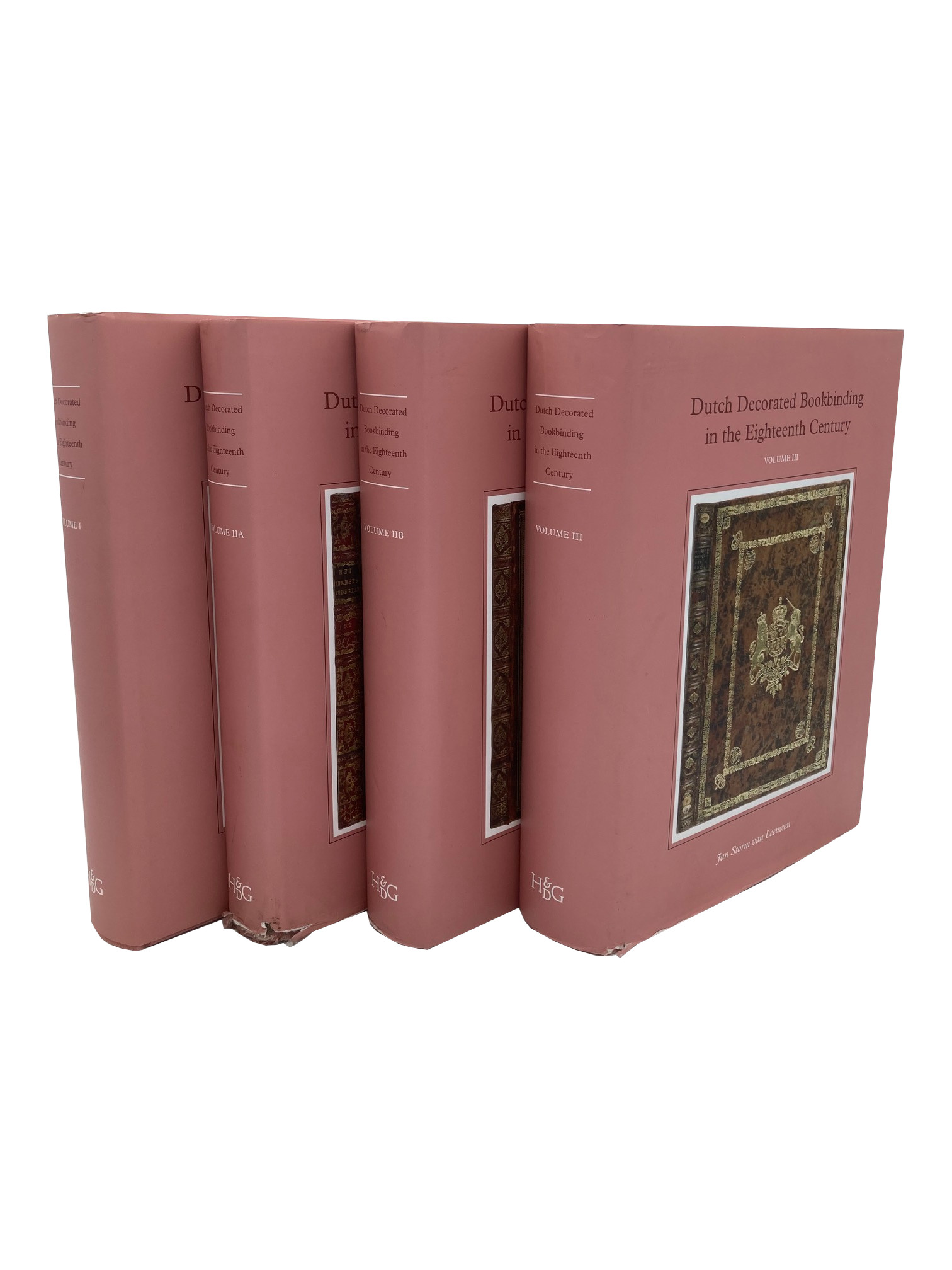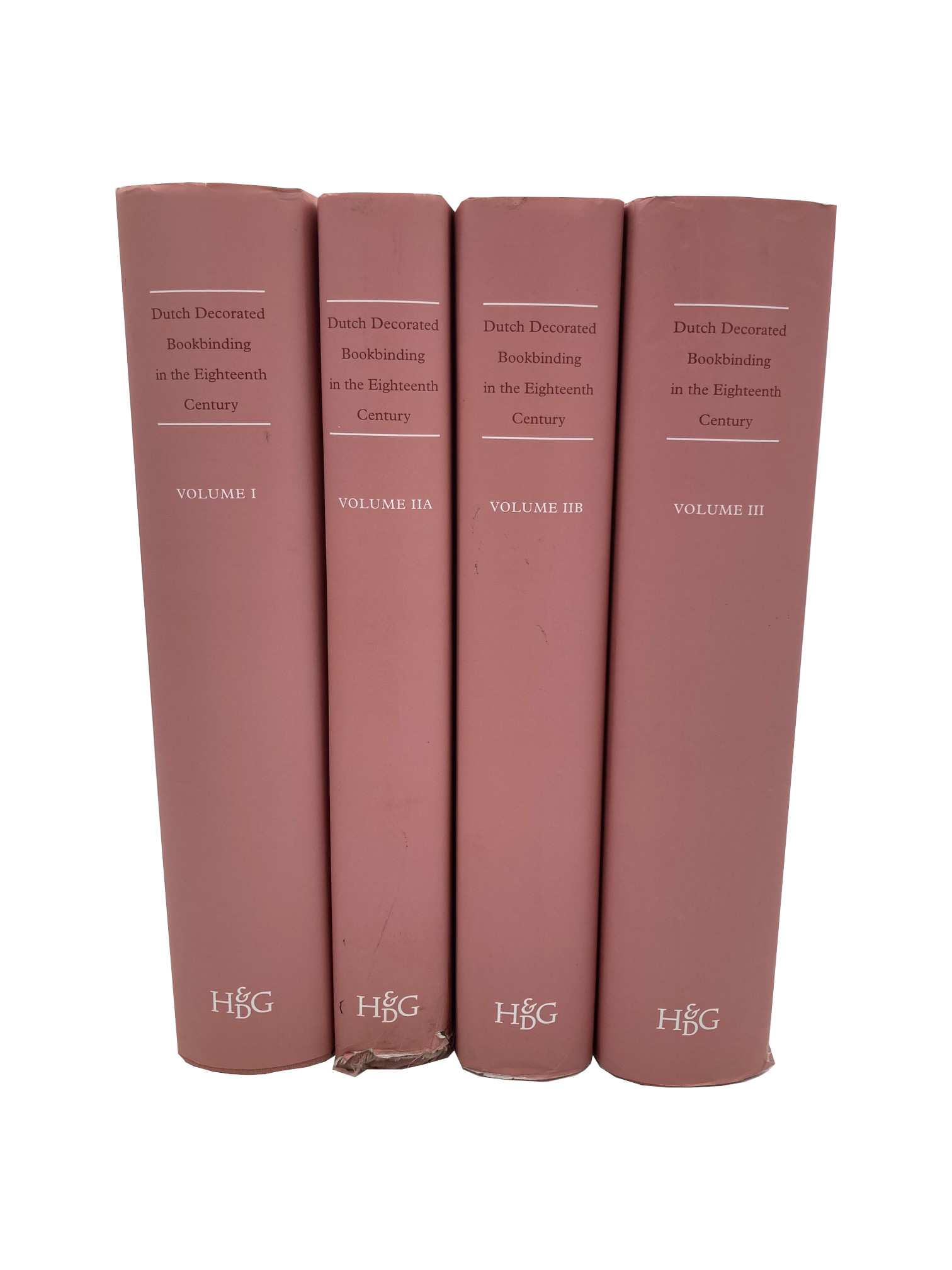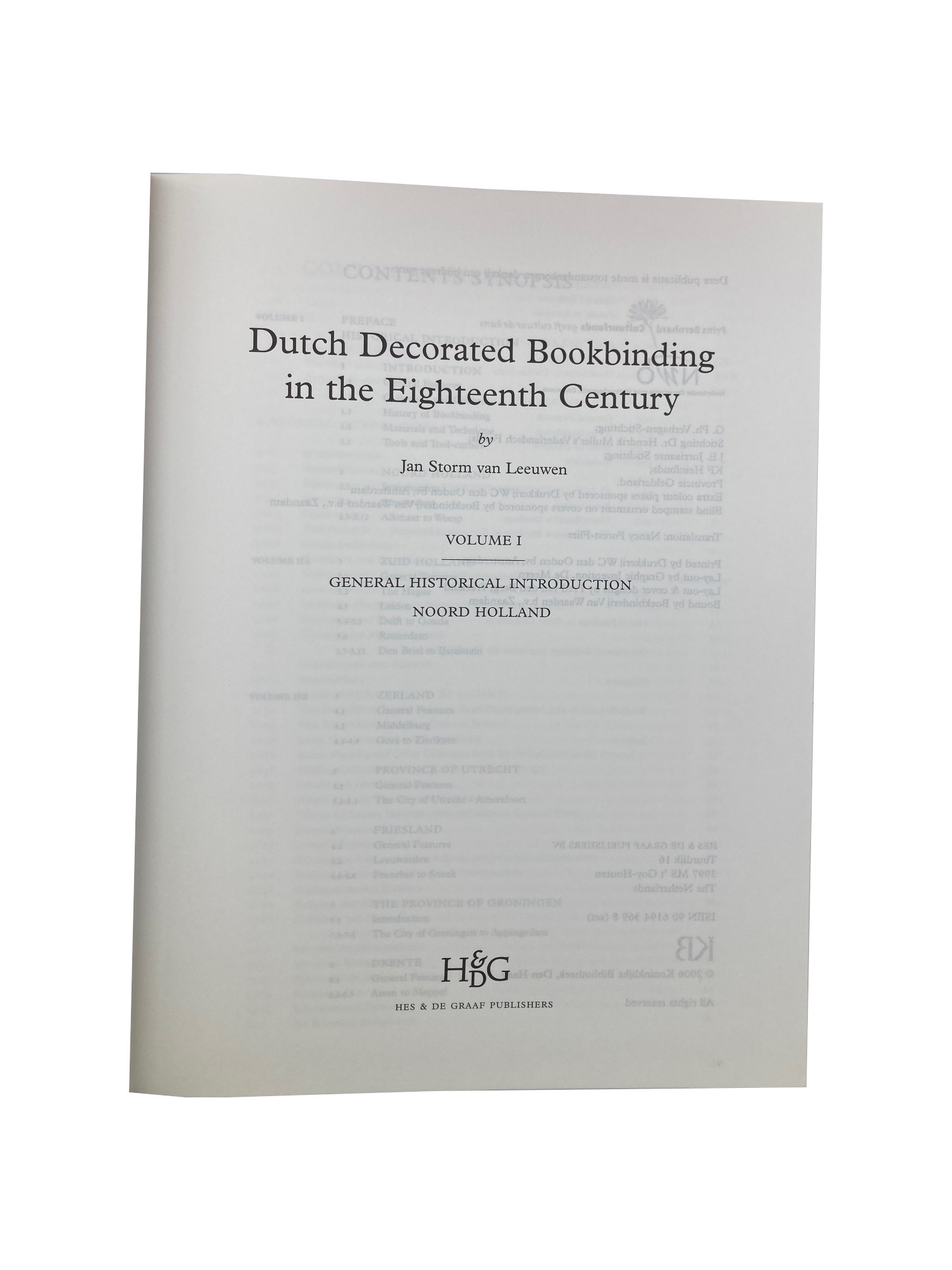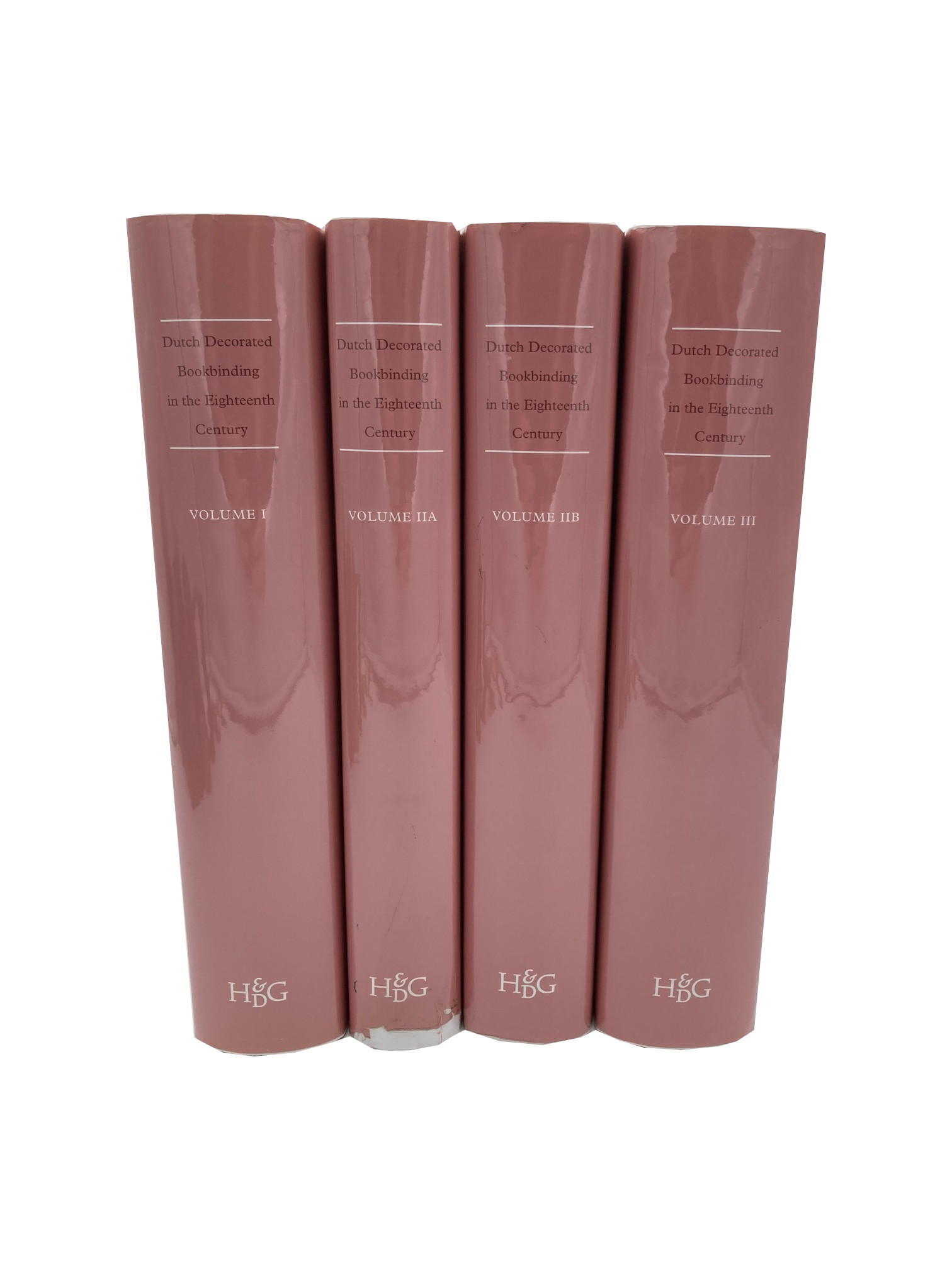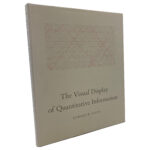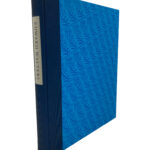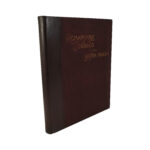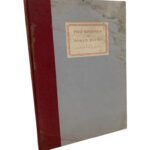Description
[004294] Leeuwen, Jan Storm Van. Dutch Decorated Bookbinding in the Eighteenth Century. Den Haag: Hes & De Graaf, 2006. First Edition. 4to. Hardback. Good / Good. ISBN: 9061943698. Four volumes complete – Volume I, General Historical Introduction / Noord Holland – [4], v-xxii, 831pp, [1]; Volume IIa, Zuid Holland – [4], v-xii, 536pp; Volume IIb, Zeeland, Province of Utrecht, Friesland, Province of Groningen, Drente, Overijssel, Gelderland, Noord Brabant, Limburg, Place Unknown or Irrelevant, Bindings in Exceptional Materials – [4], v-xvi, 537-1243pp, [1] and Volume III, Catalogue of Bindings in the Koninklijke Bibliotheek and the Museum Meermanno-Westreenianum, List of Bindings in Other Collections, Overview of Rubbings Important for Identification, Diagrams, Books Referred to With Abbreviated Titles – [4], v-viii, 922pp, [2]. Original cloth in DJ’s
Generally very good, BUT significant damage to the foot of the spine of Volume IIa, with loss to cloth and DJ, scuffing to bottom edge of text block, but intact and holding well. Some wear to bottom edge of DJ of Volume III, with tiny amount of loss. Internally quite bright and clean
From the library of John Collins, but with no evidence of this
This extraordinary work, profusely illustrated throughout, unsurprisingly was the joint winner of the ILAB Breslauer Prize for Bibliography in 2010
“Four substantial and handsome quarto volumes, the standard work about eighteenth-century Dutch decorated bookbinding, are Jan Storm van Leeuwen’s life’s work … in terms of content, method and form, this is an authoritative work. The title of the book only refers to decorated bookbindings. To avoid giving a distorted image of reality, Storm van Leeuwen also briefly pays attention to bindings which are not decorated, or utilitarian bindings. The enormous amount of information contained in this book has been so clearly and conveniently arranged and presented that the user does not run the risk of getting lost or being overwhelmed by details. The work essentially consists of three parts which have, for practical reasons, been bound in four volumes: the historical introduction (part i) takes up a fourth of the first volume. The corpus of the history of binders and binderies per region is physically scattered over the first three volumes (parts i, iia, and iib). The vital and imposing back matter (part iii) fills the entire fourth volume” (Elly Cockx-Indestege in Quaerendo, 37 (2007), pages 162-163)
